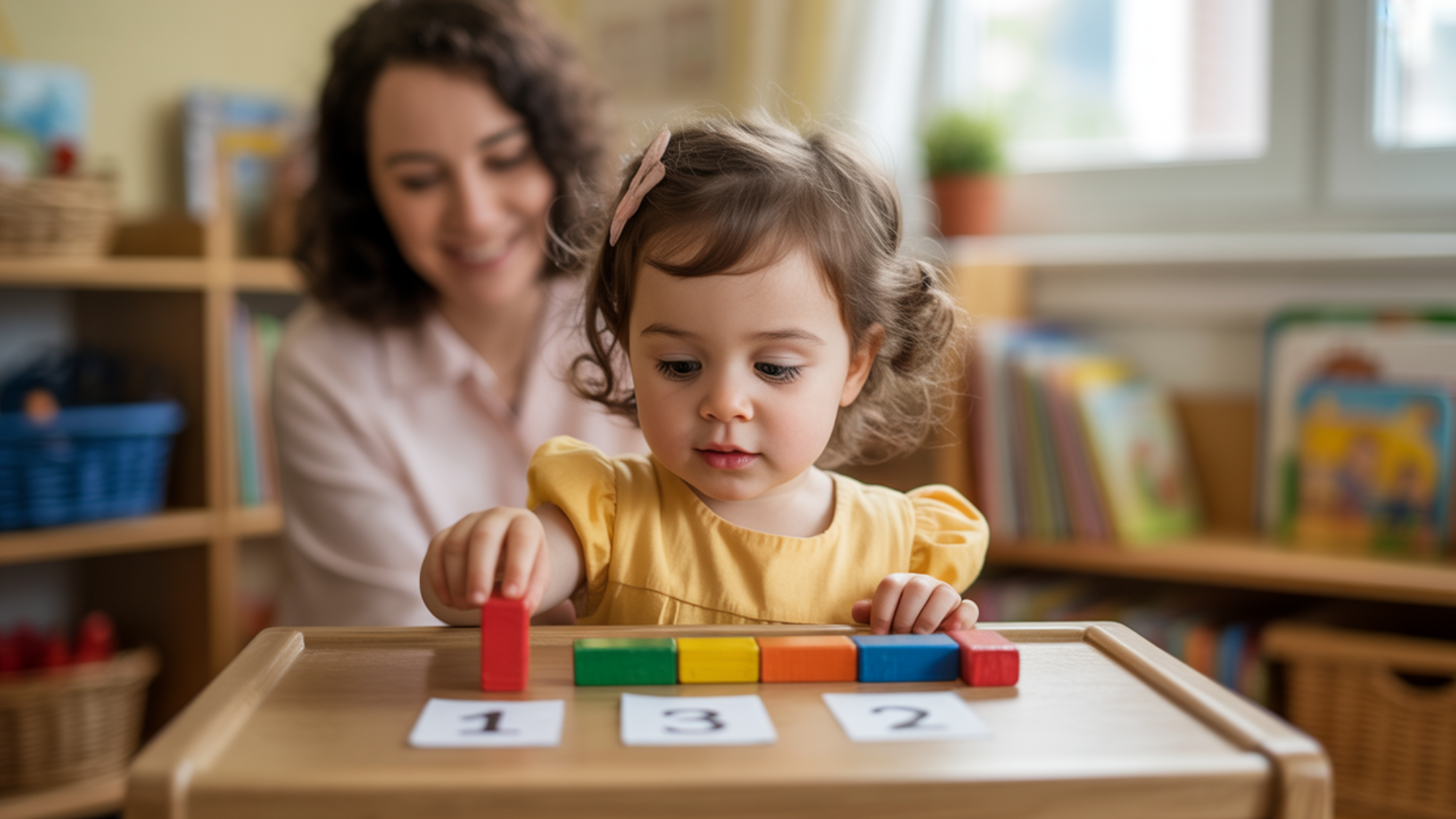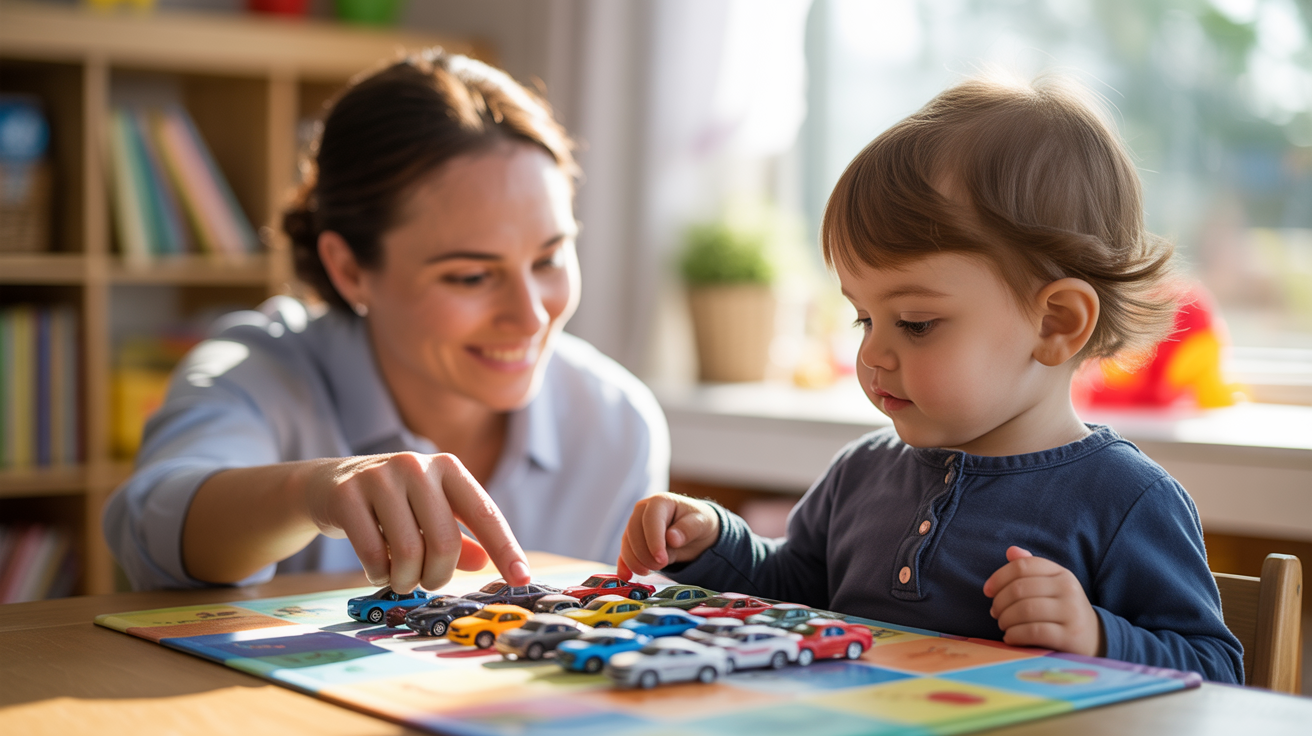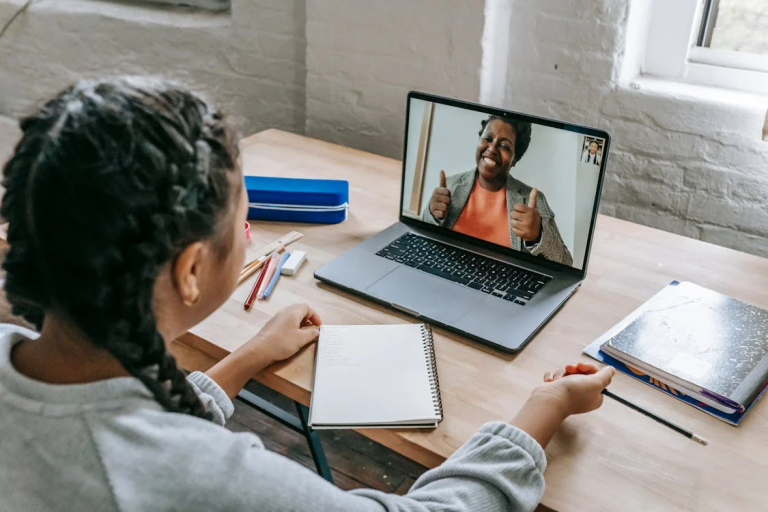One-to-One Correspondence Made Simple for Kids

Watch your child count five toys and somehow end up with seven; does this sound familiar?
Most parents and teachers notice that young children struggle with counting accurately, often skipping numbers or counting the same object twice.
This common challenge stems from a missing foundation skill that many adults take for granted.
One-to-one correspondence is essential for developing children’s counting skills, as it teaches them to match each object with a corresponding number, which is foundational for future math.
In this guide, you’ll learn precisely what one-to-one correspondence means, why it’s critical for your child’s development, and practical ways to teach this skill at home or in the classroom.
What Is One-to-One Correspondence?
One-to-one correspondence is the ability to match each item in one group with exactly one item in another group.
Think of it as creating perfect pairs, such as matching each fork with a corresponding plate or giving each child one cookie.
This concept means understanding that every object is counted only once. When your child touches a toy car and says “one,” then moves to the next car and says “two,” they’re using one-to-one correspondence. Each number word connects to exactly one object.
This foundational skill appears in daily activities, like setting the table with one plate and one cup per person.
Putting on shoes involves matching each foot with one shoe. These everyday moments become learning opportunities when children recognize the matching pattern.
Benefits of One-to-One Correspondence in Early Learning

These specific advantages show how mastering this skill supports children’s overall development and future academic success.
1. Foundation for Basic Math Skills
One-to-one correspondence is like building the first floor of a house before adding more stories. When children learn to match one object to one number, they truly understand what counting means.
This skill makes it much easier for them to learn addition, subtraction, and other math concepts later because they already know that each number represents a real amount.
2. Improves Focus and Attention
Learning to match objects one by one is like training your brain to be a detective. Children must pay close attention to details and stay focused on their tasks.
This practice helps them concentrate better in all their schoolwork, making them better listeners and learners in every subject.
3. Boosts Memory and Recall
When children practice one-to-one correspondence, they exercise their memory muscles just like athletes exercise their bodies. They have to remember which items they’ve already counted and keep track of their progress.
This mental workout strengthens their memory and helps them retain information more effectively in all areas of learning.
4. Supports Language Development
Counting and matching objects provides children with numerous opportunities to practice speaking and using new words. They learn number words like “one, two, three” and describe words like “more, less, equal.”
This activity is like having a fun conversation while learning, which helps build their vocabulary and communication skills.
5. Builds Confidence
Successfully matching and counting objects gives children a wonderful sense of accomplishment, similar to winning a game or solving a puzzle.
Each time they master this skill, they feel proud and ready to try more complicated challenges. This confidence helps them believe in themselves and keeps them motivated to learn new things.
How to Teach One-to-One Correspondence
Teaching one-to-one correspondence is like teaching a fun game that gets easier with practice.
Start with 3-5 objects that your child can touch, such as blocks or snacks. Show them how to point to each item while counting “one, two, three” out loud.
Then, guide their hand as they try it themselves. Keep practice sessions short and sweet – just 5-10 minutes work best for young learners.
Make it part of everyday activities, such as counting crackers at snack time or toys during cleanup. Use real objects instead of worksheets, celebrate their successes, and be patient when they make mistakes.
With regular practice during natural moments, children will master this essential skill while having fun.
Common Challenges in Learning One-to-One Correspondence

Even with the best teaching methods, children often face specific obstacles when learning this fundamental skill.
| Challenge | What It Looks Like |
|---|---|
| Double Counting | A child counts the same object twice or skips objects entirely |
| Speed Issues | Counting too fast without properly matching numbers to objects |
| Memory Problems | Forgetting which items have already been counted |
| Physical Coordination | Difficulty pointing to objects while saying numbers |
| Number Sequence Confusion | Mixing up the order of the number of words |
Difficulty in Understanding – Many children struggle to match numbers to objects. They may recite numbers correctly but fail to connect each number with a specific item.
This disconnect occurs because counting requires memory and coordination, which take time to develop.
How to Overcome Them – Slow down the process and guide their pointing with your finger while they count. Use objects your child likes, such as toy cars or crackers, to make counting more engaging.
When children care about the objects, they focus better and learn faster.
Examples of One-to-One Correspondence in Real Life
These practical examples demonstrate how this important skill naturally emerges in children’s daily experiences and learning environments.
Everyday Life
Home activities provide countless opportunities for children to practice matching and counting in meaningful ways.
1. Setting the Table – Children place one fork next to each plate or put one cup at each seat. This household task teaches matching while being a helpful activity.
2. Getting Dressed – Putting on shoes requires pairing each foot with one shoe. These daily routines make learning feel natural and automatic.
3. Snack Distribution – Giving each friend one cookie or handing out one juice box per person. This activity combines math skills with the concept of fair sharing.
Classroom Activities
Teachers create structured learning experiences that reinforce one-to-one correspondence through engaging group activities.
3. Clean-Up Helpers – Each child is assigned a specific job, such as erasing the board or watering plants. Children learn that each person matches with exactly one responsibility.
4. Art Projects – Gluing one button onto each drawn circle or placing one sticker on each paper square. Creative activities make learning feel like play.
5. Musical Chairs – Each child gets one turn or one chair during circle time games. This makes the matching concept fun and interactive for groups.
Conclusion
One-to-one correspondence forms the foundation that supports all future math learning in your child’s education.
This simple yet powerful skill helps children understand numbers, build confidence, and develop logical thinking abilities that extend far beyond mathematics into daily problem-solving situations.
Teaching this concept is simple: use daily activities, such as setting the table or sharing snacks, to practice matching and counting. These natural moments make the skill practical and meaningful.
Have you tried any of these one-to-one correspondence activities with your child? Share your experiences in the comments below. We’d love to hear which methods worked best for your family!
Parents play a key role in supporting early learning. Learn more in our blog on the Role of Parents in Child Education.






